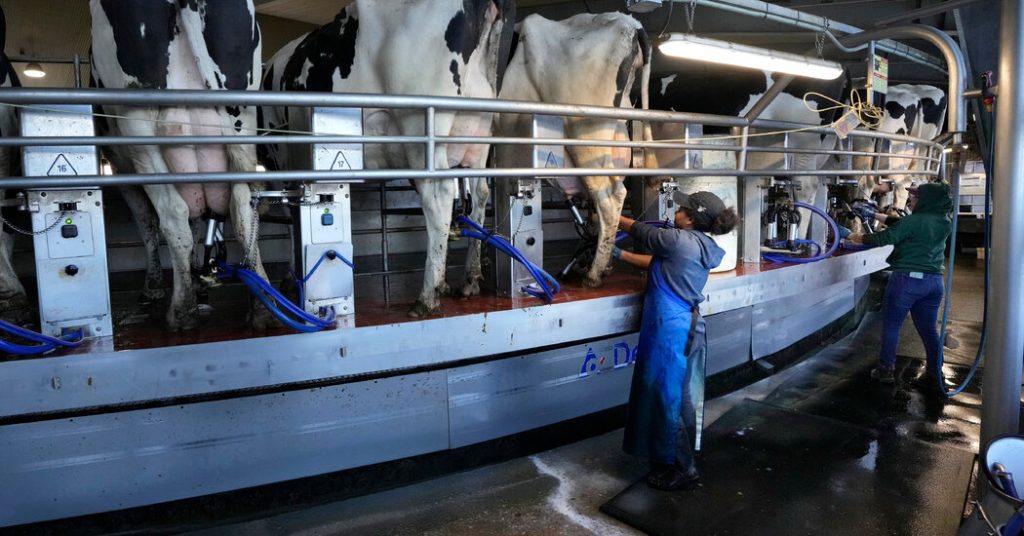The Food and Drug Administration has reported finding fragments of the bird flu virus in approximately 20% of retail milk samples tested in a nationally representative study. Samples from areas known to have dairy herds infected with the virus were more likely to test positive. While there is no evidence that the milk poses a danger to consumers, the high rate of positive samples indicates that the outbreak in dairy cows may be more extensive than previously thought. Virologist Richard Webby believes it is still possible to eradicate the virus but acknowledges the difficulty in designing effective control measures without a full understanding of the outbreak’s scope.
Critics have raised concerns about the federal testing strategy, which they believe is too limited to reveal the true extent of viral spread. Prior to mandatory testing of dairy cows moving across state lines, testing had been voluntary and focused mainly on cows with obvious symptoms. With just 23 people tested for the virus and 44 being monitored for exposure, a widespread outbreak in cows could pose significant risks to farm workers, the dairy industry, and public health. Sustained spread among cows could increase the likelihood of the virus acquiring mutations that make it more transmissible to humans.
The pasteurization process used on milk is believed to deactivate the bird flu virus, known as H5N1. Although genetic fragments of the virus may be present in the milk, they are not capable of causing infection, according to experts. Federal officials are still conducting tests to determine if viable virus remains in the milk post-pasteurization, though scientists consider this prospect very unlikely. Researchers did not find any live virus in retail milk samples, indicating that pasteurization effectively kills off the virus before the milk reaches grocery shelves.
Dr. Jeanne Marrazzo of the National Institute of Allergy and Infectious Diseases stated that federally sponsored researchers have not found any live virus in retail milk, which is encouraging. While the 20% positivity rate may not imply that 20% of the nation’s dairy herds are infected, further research is needed to determine the full scope of the outbreak. Scientists caution against making premature assumptions based on the positivity rate and note the complexities of interpreting these findings. Dr. Donald A. Prater of the FDA highlighted the novelty of the research effort, emphasizing the importance of understanding the effects of pasteurization on the bird flu virus in milk and exploring differences among milk products in the supply chain.


